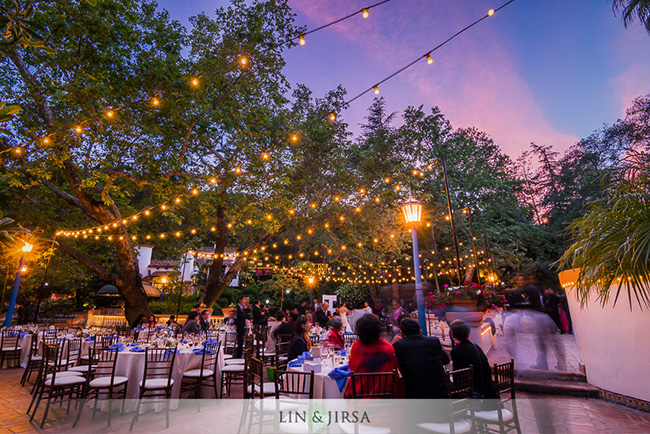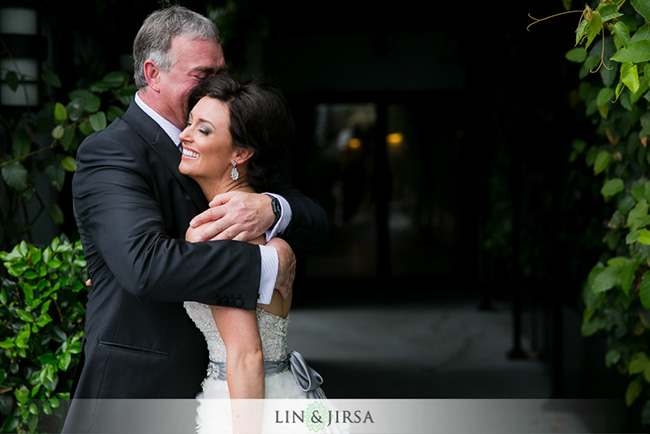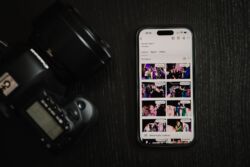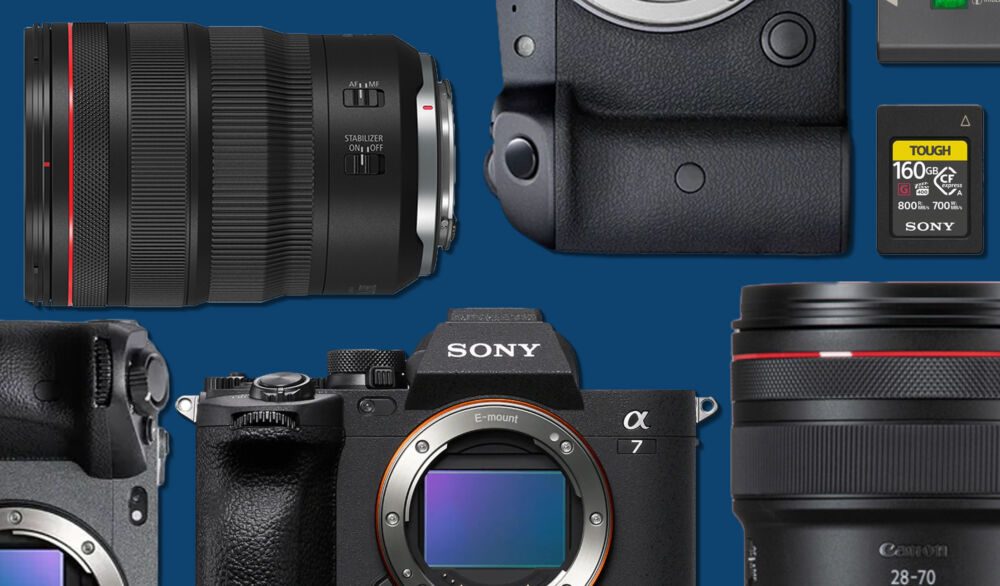Before photojournalism became an established style of wedding photography, the industry seemed firmly entrenched in a standardized set of perfect cliche-looking shots and effects. Wedding photojournalism transformed the industry. Instead of creating picture perfect scenes for every moment, the wedding photographer strove to capture the truth and realism in the actual moment with his or her creative vision. The result was photography that was no longer standardized as a canned product sold from the shelf of your grocery store. Rather, each client got customized pictures that may not have been flawless, but were perfect in capturing the actual emotion and atmosphere of the scene. In this article, we want to help you improve your wedding photojournalism skills with these simple tips.
This article was originally written in 2010 and modified in 2022 with updated advice and images.
Redefine Photojournalism

The first thing we have to do is redefine our notions of photojournalism. Wedding photojournalism does not equal classic photojournalism. We have to go beyond capturing the entire story and focus on certain parts of the story. For example, the bride may be stressed for any number of reasons, but she won’t want to see that emotion reflected in her pictures. Also, pictures of expressionless people chewing on food or two guys having a deep, serious conversation about work might tell the story; but it’s not the story our clients are going to want to see. If the picture has no emotion, or it has a negative emotion, it’s probably not worth taking, even if it tells part of the story.
The Storytelling formula | Wide, Medium Tight

The surroundings, the atmosphere and the ambience are all extremely important in capturing an image. Sometimes one image won’t tell the whole story and it’s fitting to shoot a wide, medium and a tight shot.
Sometimes, when I have my Canon 70-200mm mounted on my camera I get lost in shooting and I have to quickly remind myself that some wide shots would be great to show the moment as a whole. I force myself to shoot with my Canon 24mm prime to focus more on composition when a zoom lens might be more forgiving when framing my shots. For more education on storytelling, see this article called “Tell Better Stories and Increase Print Sales in 4 Steps.”
Capture the Small Wedding Details
Much like capturing the entire atmosphere with wide photos, don’t forget about the small details. Sometimes little pieces of memories can be lost because they are so small and are often times overseen.
Our couples spend lots of time selecting the most perfect details that we need to spend time to make sure we capture them. The food, the candle holders, the edible flowers that end up dressing up the cocktails, and the cupcakes Dad ordered from New York from the Bride’s favorite cupcake shop. Be aware and photograph them as part of your wedding photojournalism.

When shooting weddings, I always make sure to ask if there are any sentimental items that need to be captured. Even after our initial meeting and after the client provides us with a must-have-shot-list, there might still be items given the day of the wedding that don’t make that list. Those are important in telling the story. Both the giver and receiver have an emotional attachment to that object and you never know if those items end up being family heirlooms in the future.
Know and Master Your Settings
Being comfortable with your gear is one of the most important factors with wedding photojournalism. If taking a picture spontaneously isn’t automatic, work at familiarizing yourself with your gear in order to snap the shutter effortlessly.
Settings are one thing…make sure you snap at the correct shutter speed-high shutter speeds for fast action, slower shutters for low light situations. Do your best to shoot in native ISOs and always make sure you are aware of what settings your camera is set to.
For example, if you’re outside and your ISO is set to 100, then quickly go inside or you should automatically switch your ISO to what’s appropriate. Your eyes and your mind should always be ahead of the camera. Putting yourself into a situation where you miss a shot or an emotional moment because you forgot to change your settings can be frustrating.

Find a Foreground (When available)
We want each image to tell a full story; and for that we need to see, not only the emotion of subject(s), but also the person or object that is bringing out the emotion. Whatever is bringing out that emotion is usually going to be in the foreground of our images, so sometimes we have to find the perfect crop and composition in order to include the whole story. As you look at the following examples, imagine the same image cropped in, without the foreground. They leave the viewer asking questions like, “what is she laughing at?” or “Why is she crying?” Good wedding photojournalism requires context

Listen and Anticipate
Stand close to your potential subjects and listen in on their conversations. If it seems like it’s going to lead to a smile or a laugh, be ready, as most people smile right after they finish a sentence. Also, it’s tempting to laugh at a funny moment and laugh all you want behind the lens. Just make sure you’re getting everyone else’s reactions as well. This may take a lot of poise, as it’s easy to shy away and act guilty if someone catches you pointing a camera at them or eavesdropping. It’s important to maintain your composure, stay in position and have your camera ready to fire at any moment.

Here are some things I keep in mind when I anticipate: I do my best to think through the lens. What I mean by that is know what type of shot you are trying to achieve. If you have a wide angle, remember you’re telling the story from a scenic standpoint so don’t forget to include the room’s architecture or the location’s features. When you have a long zoom or are shooting tight know how your bokeh will look. Anticipate the image before its shot.
Also, when I first encounter the family, I study their emotions, I pay attention to who the players are. Now I sound like I’m turning it into a sporting event, but really I’m trying to understand the personalities in the room. Dissecting which aunt or uncle is the comedian, which parent is going to be more emotional, or which bridesmaids are closer to the bride. That way I know where to focus my attention.

Physically Move Around! (Be in the Right Position)
As we listen to the sounds of any wedding, every laugh we hear is a missed opportunity for a nice candid image. Being in the right position at the right time is important for getting the most and best possible candid images. Walk around the group of people talking, climb on chairs, and do whatever it takes to find that position. For example, if we see our bride approaching a guest for the first time on her wedding day, we’ll probably want to be directly behind her so we can get the expressions on the face of the person hugging our bride.

Use the Right Lens for Wedding Photojournalism
This is probably the most obvious tip, but it’s worth mentioning for those who are still hesitating to pick up that expensive zoom lens. Almost all people freeze up or act differently when they know a camera is pointed at them, so most candids are going to be shot with higher zoom lenses, such as the 70-200mm lens.

Predetermine Your Lighting
For most of your images, make sure you’re using a nice diffused and matched light source, and consider using natural light. An image looses a part of its story telling power when the lighting looks artificial for any reason, whether it be mixed lighting or harsh flash lighting. If your flash and the background vary widely in temperature, your subjects can seem removed from their environment. Similarly, if you’re using direct, harsh lighting, your subjects might look like a deer caught in the headlights. Basically, the more natural you can make the lighting look, the more natural the image will look, and the more effective your image will be for telling the story of that particular moment in time.

This next point, using creative lighting, is going to seemingly contradict the first point. It’s true that we want most of our candid images to look natural, with matched, diffused, and soft lighting; but every once in a while, we should spice things up a bit. Just because we’re capturing a real moment, doesn’t mean we can’t add interest and style to the image by utilizing our lighting skills. You’ll have to pick and choose the right moments to use your creative lighting techniques based on your style and preference, but for certain expressions and moments, this can vastly improve your overall photography.

Know Your Moments for Wedding Photojournalism
Knowing what to look for at the right moment is important to producing great wedding photojournalism. For example, there’s a lot to focus on during the wedding ceremony, but out of the corner of your eye, keep an eye out for tears from the bridesmaids and the parents of the bride. During the father/daughter dance, make sure you’re focusing, not only on the subjects dancing, but also the emotions of the mother and the groom in the crowd. During bride preparation, watch for the reactions of the bride’s mother and the bridesmaids upon seeing the bride for the first time. The list goes on and on with a different focus for each scene; but remember that these transient moments are easy to miss if you’re not keeping an eye out for them.

Engage with the Couple
 Most people don’t act like themselves when a camera is in their face. Sometimes you’ll get lucky and someone is overly charismatic when the lens is pointed in his or her direction, but it’s more likely that the room is uncomfortable because you are the elephant in the room holding a camera. Womps! In those situations, we need to be a catalyst.
Most people don’t act like themselves when a camera is in their face. Sometimes you’ll get lucky and someone is overly charismatic when the lens is pointed in his or her direction, but it’s more likely that the room is uncomfortable because you are the elephant in the room holding a camera. Womps! In those situations, we need to be a catalyst.
Personality is key. Don’t be afraid to encourage emotion when necessary. Sometimes we see the emotion bottled up in families during a wedding day. We realize Dad is holding it in, and there’s a good reason Mom has been holding on to that pack of tissues all morning. Bring out those feels.
When I have this opportunity I take advantage of it. One of my favorite things to do with a Dad and Bride is to pull those emotional strings. When Dad sees her daughter for the first time during the morning of her wedding day, it’s a special thing. Sometimes so much is going on that the people involved don’t realize how significant of a moment it is.
Right before Dad walks into the bridal room, I make sure to stop him, I look him right in the eyes and ask, “Are you ready to see your daughter for the last time before she gets married?”
That usually does it. I ask the question in a variety of ways depending on how much I’ve gotten to know the family, but usually it’s a buffet of shutter clicks as he walks in! I pray I didn’t set myself up for delays because of a makeup malfunction, but even then the moment, the images that end up being captured, are all worth it.

Watch the Video
Conclusion
It’s easy to throw around the phrase “wedding photojournalist.” As a sort of catch-phrase these days, it’s almost impossible to find a bride who doesn’t want wedding photojournalism incorporated in at least part of their wedding photography. I think it’s important that before we call ourselves photojournalists, we develop our skills for capturing these story-telling moments and deliver a product that qualifies as the term we are classifying our styles as.
The images you deliver in your wedding photojournalism will become memories shared with generations and the moments you witness are being told through your eyes, their story. If your client can look at the image and remember exactly what happened, exactly how they felt and what they were thinking, they’ll thank you for it.
Do you have other tips that you keep in mind when snapping for photojournalistic shots? All of us are always looking to improve, so I’d love to hear them below. For more wedding education, be sure to check out the Wedding Photography Training System in SLR Lounge Premium.












